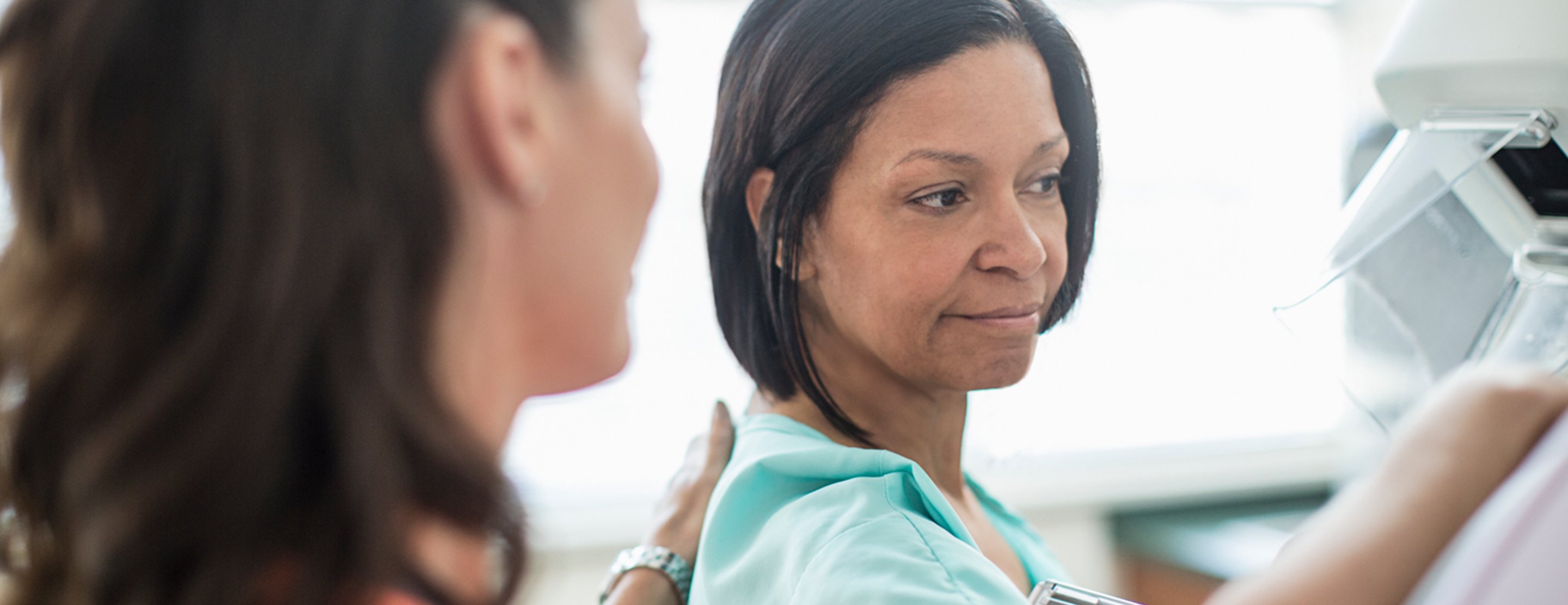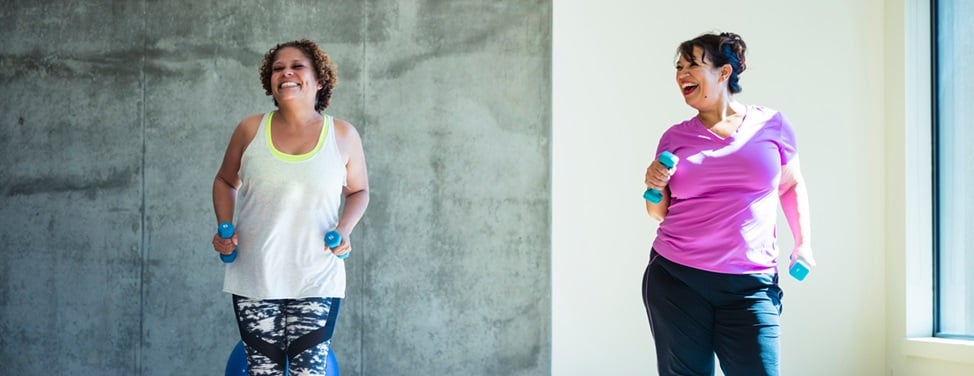
Taking Charge: Screening For Breast Cancer
When health professionals talk about screening for a disease, they mean using some sort of test to see if a person has a particular condition. The purpose of screening is to detect and treat cancer earlier, because, in general, early treatment improves the chances of survival. There are several screening tests for breast cancer. Which ones you use depend on your age and other risk factors.
Breast self-examination
A useful tool for finding breast lumps is a breast self-examination (BSE). Doctors recommend that women learn to do this exam in their late teens or early 20s. Make sure to examine both your breasts carefully each month at the end of your menstrual period, or at a set time each month, if you no longer menstruate.
If you find a lump in your breast, call your doctor. Most lumps (eight out of 10) are not cancer, but that does not mean that you can assume a lump you find is harmless. You must have your doctor examine it.
American Cancer Society breast self-exam Instructions
The best time for breast self-examination (BSE) is about a week after your period ends, when your breasts are not swollen or tender. If you are not having regular periods, do BSE on the same day every month.
- Lie down with a pillow under your right shoulder and place your right arm behind your head.
- Use the finger pads of the three middle fingers on your left hand to feel for lumps in the right breast.
- Press firmly enough to know how your breast feels. A firm ridge in the lower curve of each breast is normal. If you're not sure how hard to press, talk with your doctor or nurse.
- Move around the breast in a circular, up and down line, or wedge pattern. Be sure to do it the same way every time, check the entire breast area, and remember how your breast feels from month to month.
- Repeat the exam on your left breast, using the finger pads of the right hand. (Move the pillow to under your left shoulder.)
- If you find any changes, see your doctor right away.
- Repeat the examination of both breasts while standing, with one arm behind your head. The upright position makes it easier to check the upper and outer part of the breasts (toward your armpit). This is where about half of breast cancers are found. You may want to do the standing part of the BSE while you are in the shower. Some breast changes can be felt more easily when your skin is wet and soapy.
- Right after your BSE, check your breasts in front of a mirror for any dimpling of the skin, changes in the nipple, redness, or swelling.
Clinical breast examination
You should also have a health professional examine your breasts on a regular basis — every three years for women age 20 to 39, and every year for women age 40 and over.
Screening mammography
A mammogram uses X-rays to take pictures of your breast tissue. Technicians take the pictures, and a doctor (a radiologist) "reads" the pictures to find any breast abnormalities. A mammogram takes very little time, and is an important way to protect your breast health.
The technician usually takes two pictures, or films, of each breast. To take the picture, your breast is compressed between two plates. The compression can feel somewhat uncomfortable, but it lasts for only a few seconds. The entire mammogram usually takes about 20 minutes.
A screening mammogram can be used to check women who have no symptoms of breast cancer for the earliest signs of the disease. Many professional organizations recommend that women have a mammogram annually beginning at the age of 40. Often your doctor may request that you get your first, or "baseline," mammogram in your late 30s. Younger women who are at higher risk for breast cancer may also have screening mammograms. The radiologist will look for several types of changes on a screening mammogram:
- Calcifications. Calcifications are tiny mineral deposts within the breast tissue that appear as small white spots on the X-ray film. Certain patterns of calcifications are associated with an increased risk for breast cancer. If you have an abnormal pattern of calcifications, your doctor may recommend that you have a breast biopsy.
- Masses. Masses (lumps) are usually caused by benign breast conditions, but they may be breast cancer. Benign lumps may include cysts (sacs containing fluid) or fibroadenomas (solid lumps).
Mammography myths
- Radiation from mammograms increases my chance of getting cancer. Modern mammography equipment uses only 0.1 to 0.2 rads (a measurement unit) per X-ray, a dose that over a lifetime will not meaningfully increase your risk of developing cancer. Doctors agree that the benefits of this procedure far outweigh the very small radiation dose.
- Mammograms don't work on younger women. Young women tend to have denser breast tissue, and it is sometimes more difficult to see breast abnormalities. The breast tends to become less dense over time.
- It doesn't matter where I have my mammogram. As with many things in life, practice and experience count. It is better to have a mammogram performed by a doctor who "reads" lots of breast films. Studies have shown that radiologists who interpret a large number of mammograms are better at finding abnormalities, as are radiologists who specialize only in mammography.
Keeping track of your mammograms
One of the reasons regular mammograms are so helpful is that they allow the radiologist who inspects them to note any changes in your breast over time. If you move or change physicians, you need to make sure that you know where your past mammograms are stored. Keep a list showing the dates of your mammograms and the place where each was performed. It is important to obtain the films from the previous facilities so that they are available to the radiologist when you have your next mammogram.
Your doctor may recommend that you take additional steps to protect your health if you know that you are at high risk for breast cancer. He or she may recommend that you undergo screening tests, such as mammography, before the recommended age of 40. Some doctors may also recommend that you have a magnetic resonance image (MRI) taken of your breast. This technique uses magnetic fields to create a detailed picture of breast tissue. No X-rays are involved.
If you have a family history of breast cancer, you may want to consider undergoing genetic testing to see if you have a mutation of the BRCA1 or BRCA2 gene. Deciding whether to undergo this type of testing is a complex process. A genetic counselor can help you to consider all the arguments for and against testing.
Read More
- Next section of Taking Charge: How Is Breast Cancer Diagnosed?
Return to the Taking Charge Index
- What Is Breast Cancer?
- Breast Cancer Risk Factors
- If You Are at High Risk for Breast Cancer
- Screening for Breast Cancer
- How Is Breast Cancer Diagnosed?
- How Is Breast Cancer Treated?
- What Is Ovarian Cancer?
- Who Gets Ovarian Cancer?
- If You Are at High Risk for Ovarian Cancer
- Screening for Ovarian Cancer
- How Is Ovarian Cancer Diagnosed?
- How is Ovarian Cancer Treated?
- Living with Ovarian Cancer
- Diet, Lifestyle and Cancer
- Glossary of Terms
UCSF Health medical specialists have reviewed this information. It is for educational purposes only and is not intended to replace the advice of your doctor or other health care provider. We encourage you to discuss any questions or concerns you may have with your provider.


















